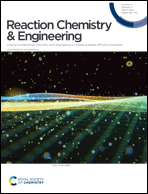Enhanced photocatalytic H2 generation of CdS using dual-cocatalysts: effect of the coordination–reduction method†
Abstract
Cocatalysts play a crucial and vital role in facilitating the photocatalytic H2 generation reaction of semiconductor catalysts. Herein, noble-metal-free Ni–NiS/CdS catalysts are successfully prepared by a facile and convenient coordination–reduction assisted one-step hydrothermal method. The effect of the coordination–reduction method on the catalyst physicochemical properties and photocatalytic performance is explored and discussed. Metallic Ni acts as a photogenerated electron trap and NiS serves as a photogenerated hole reservoir, respectively, which not only significantly restrains the recombination of photoinduced charge carriers, but also obviously enhances the light absorption. The Ni–NiS/CdS catalyst prepared using sodium dihydrogen phosphate-alcohol as a reductant exhibits better metal dispersion, narrower absorption band edge, stronger photo-absorbance intensity, higher photocurrent response and smaller charge transfer resistance than the other two dual-cocatalyst modified CdS catalysts, thereby leading to the excellent photogenerated electron–hole separation efficiency and optimal H2 production rate of 62.14 mmol g−1 h−1 (0.03 g photocatalyst, 200 mL aqueous solution containing 20% v/v lactic acid). This finding paves the feasible way for the reasonable design and utilization of earth-abundant dual-cocatalyst modified catalysts toward boosting photocatalytic H2 production.



 Please wait while we load your content...
Please wait while we load your content...